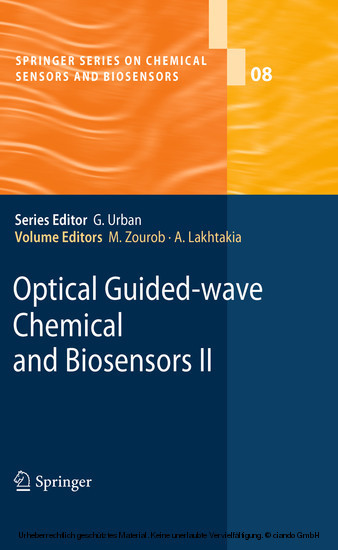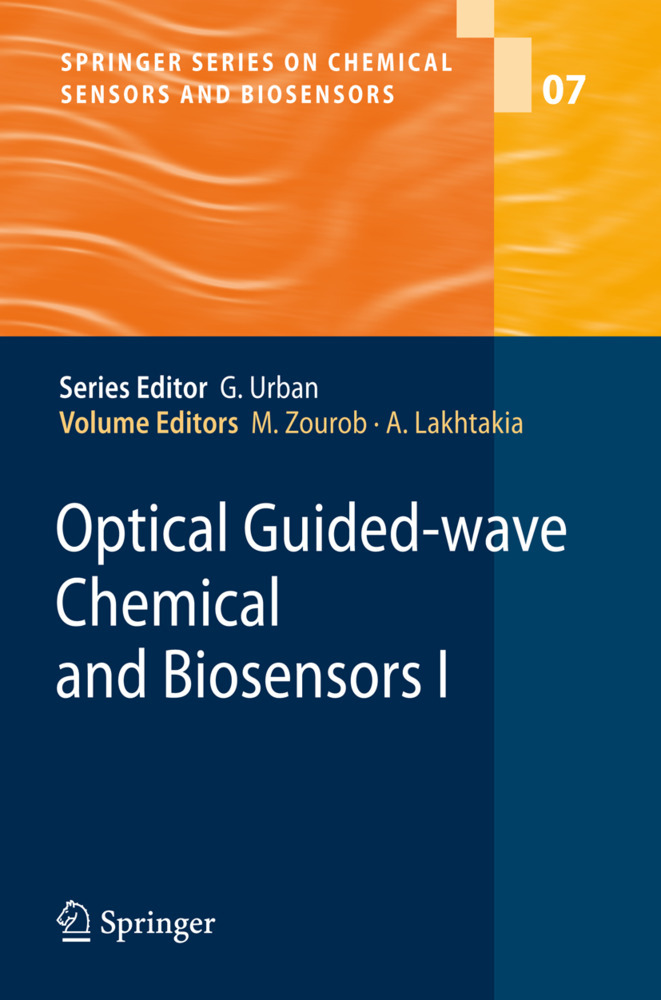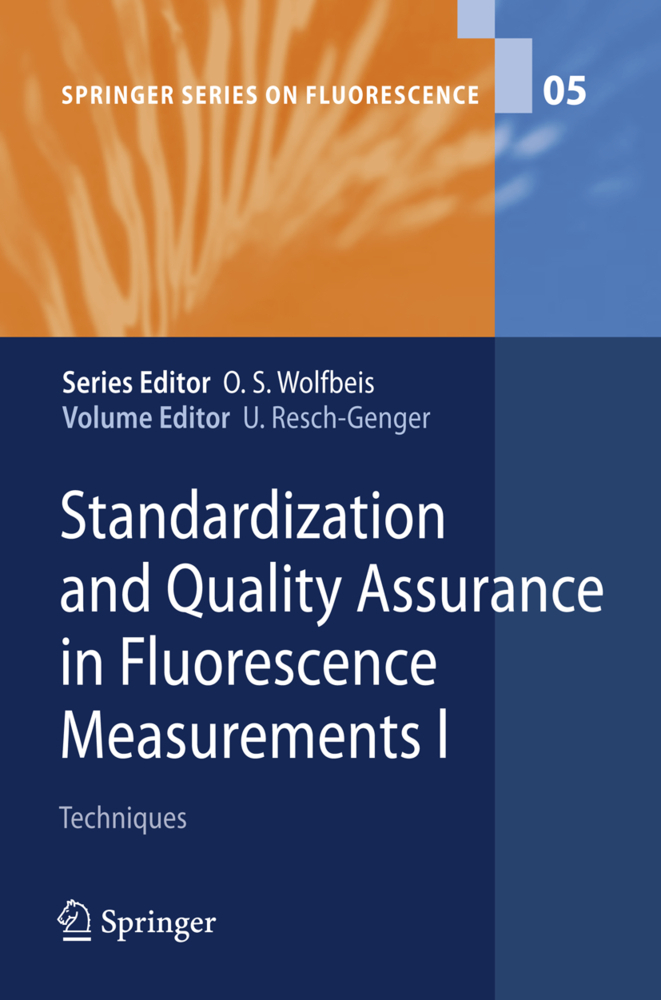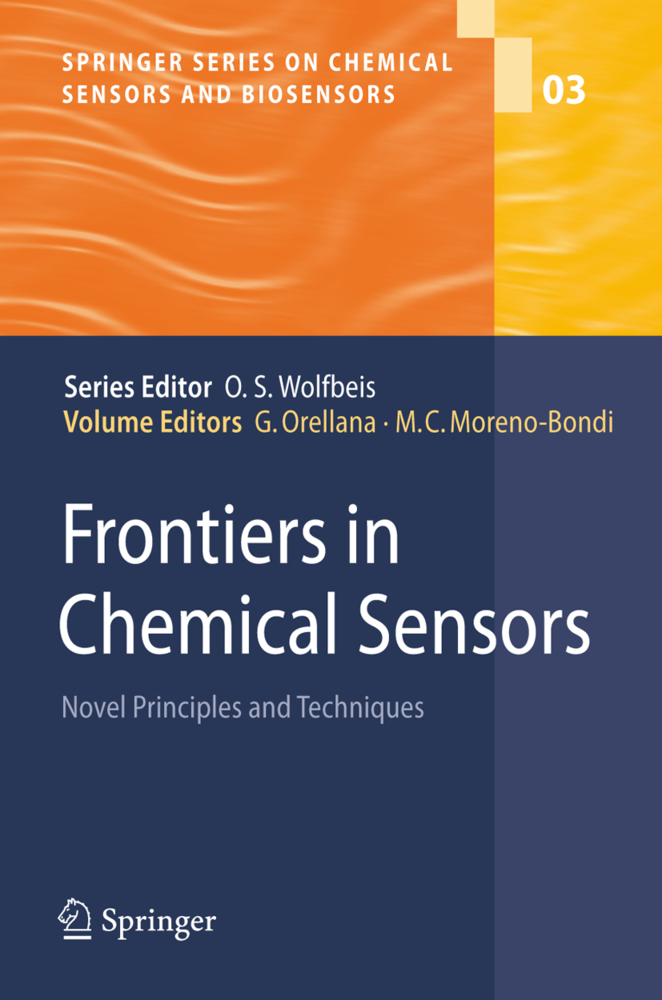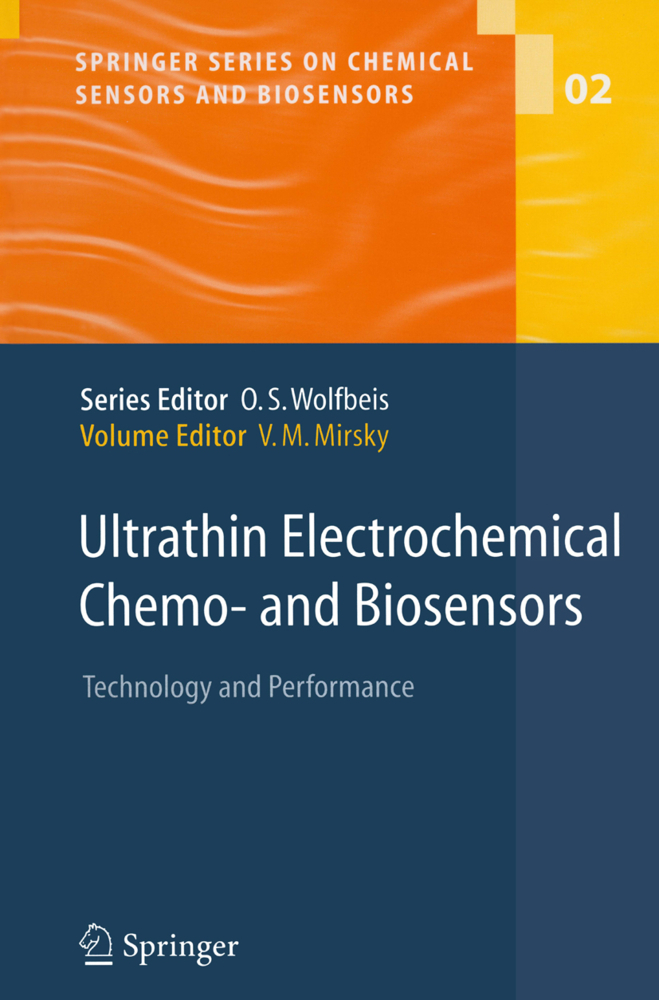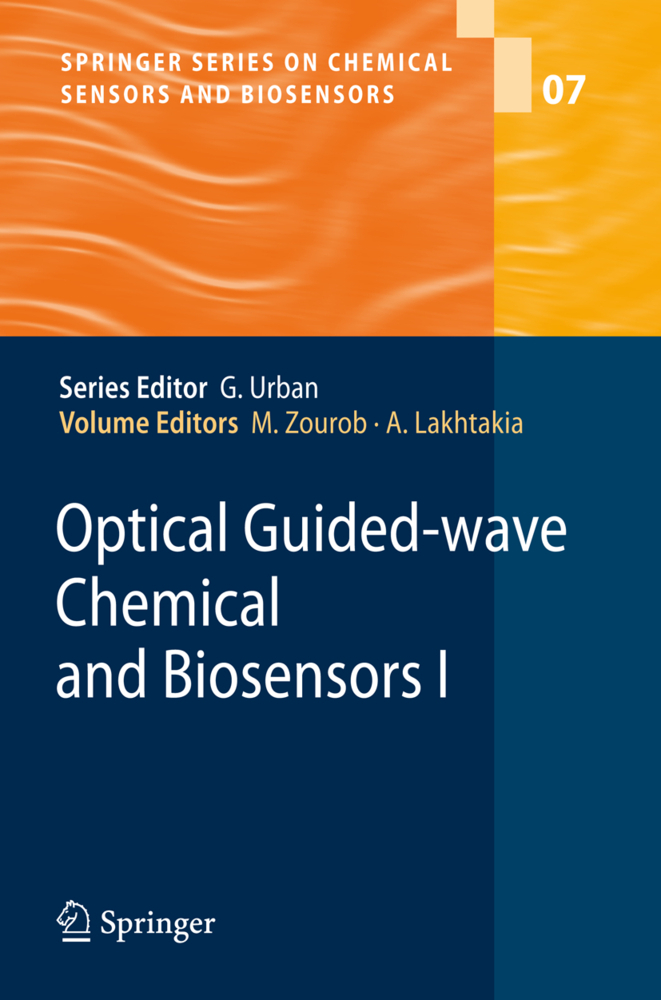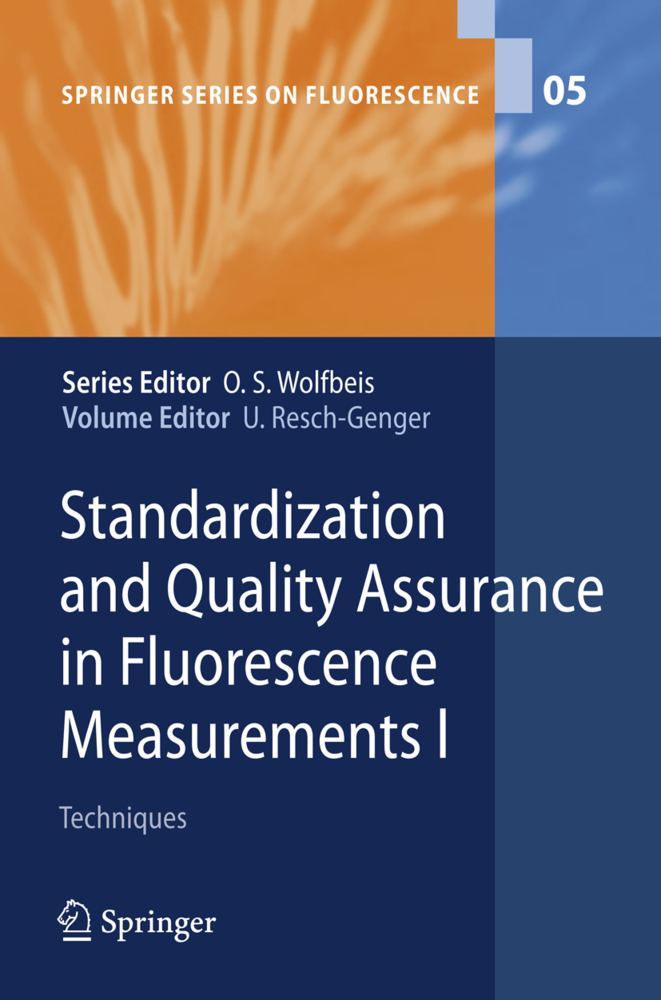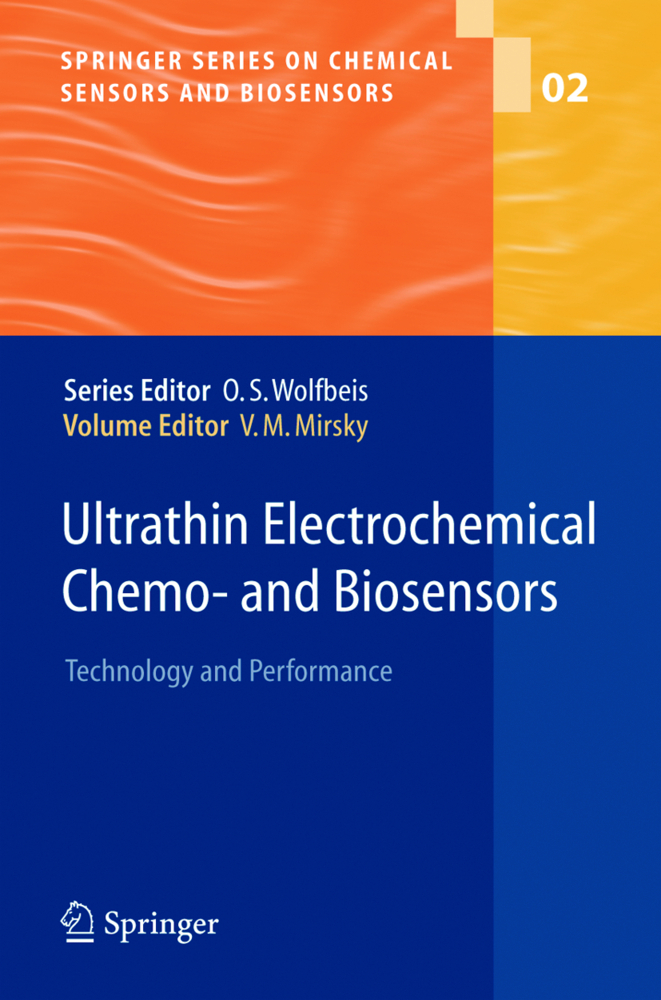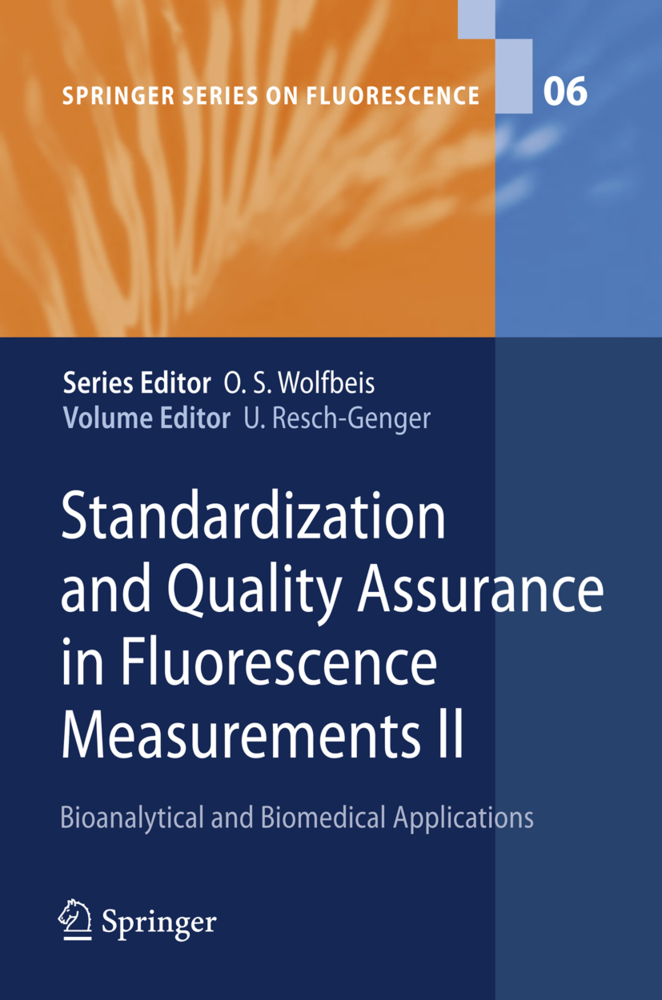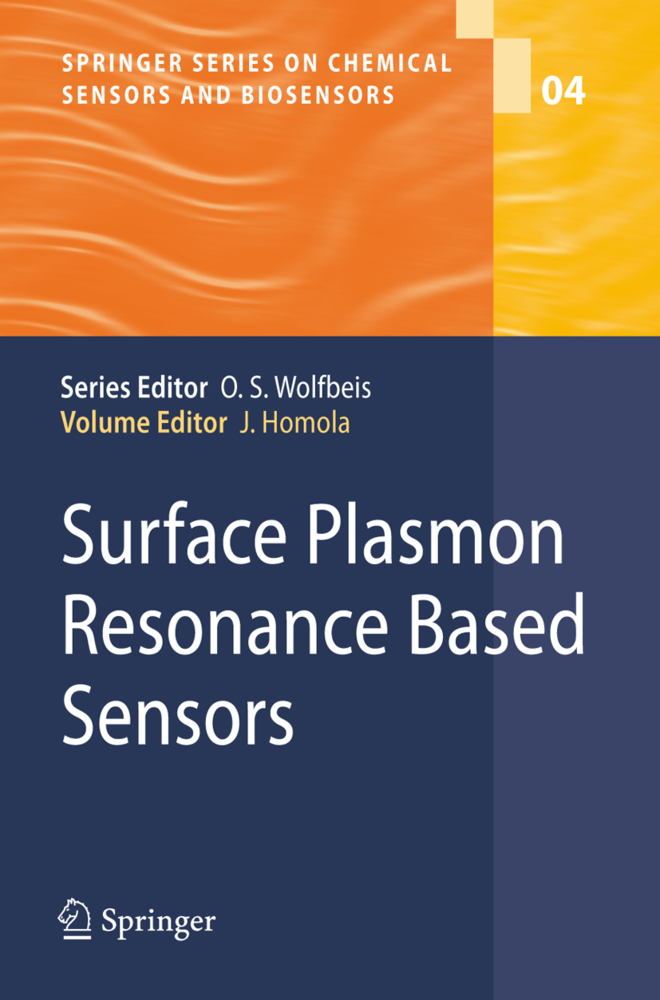Optical Guided-wave Chemical and Biosensors II
For the first time, distinguished scientists from key institutions worldwide provide a comprehensive approach to optical sensing techniques employing the phenomenon of guided wave propagation for chemical and biosensors. This includes both state-of the-art fundamentals and innovative applications of these techniques. The authors present a deep analysis of their particular subjects in a way to address the needs of novice researchers such as graduate students and post-doctoral scholars as well as of established researchers seeking new avenues. Researchers and practitioners who need a solid foundation or reference will find this work invaluable.
This second of two volumes covers the incorporation of periodic structures in waveguides to exploit the Bragg phenomenon, optical fiber sensors, hollow waveguides and micro-resonators as well as a review of the tremendous expansion of terahertz technology for sensing applications.
1;Preface;8 2;Contents of Volume II;8 3;Contents of Volume I;8 4;Part I Waveguide Sensors with Periodic Structures;16 4.1;Nano-structured Silicon Optical Sensors;17 4.1.1;Introduction;18 4.1.2;Origins and Definitions;19 4.1.3;Types of PSi Sensors;20 4.1.4;Porous Silicon Sensing with Single-Layer Interferometers;20 4.1.5;Rugate Filters;21 4.1.6;Multilayer Devices: Bragg Reflector;21 4.1.7;Multilayer Devices: Thue-Morse Sequence;21 4.1.8;Porous Silicon Microcavities in Meso- and Macroporous Silicon: Further Confinement of Light;22 4.1.9;Double-Layer, Self-Referenced PSi Sensors;26 4.1.10;Special Applications: Monitoring Peptide Synthesis;27 4.1.11;Characterizing Porous Silicon Via Enzymatic Reactions;28 4.1.12;Characterizing Enzymatic Reactions with Porous Silicon;29 4.1.13;Detection of Small-Molecule Analytes;29 4.1.14;Monitoring Diffusion out of a Sensor for Drug Delivery;31 4.1.15;Alternative Sensor Configurations: Waveguides;31 4.1.16;Towards In Vivo Applications: Enhancing the Stability of PSi Via Surface Derivatization;32 4.1.17;Sensor Infiltration and Sensor Efficiency;32 4.1.18;Exploiting the Filtration Capacity of PSi Sensors: Detection in Whole Blood;34 4.1.19;Beyond the 1D PBG: Towards 2D PBG Sensors;34 4.1.20;Concluding Remarks;37 4.1.21;References;37 4.2;Resonant Waveguide Grating Biosensor for Microarrays;40 4.2.1;Introduction1 Introduction;41 4.2.2;Microarray Technologies2 Microarray technologies;42 4.2.2.1;DNA Microarrays2.1 DNA microarrays;43 4.2.2.2;Carbohydrate Microarrays2.2 Carbohydrate microarrays;43 4.2.2.3;Protein Microarrays2.3 Protein microarrays;44 4.2.2.4;Antibody Microarrays2.4 Antibody Microarrays;44 4.2.2.5;Membrane Protein Microarrays2.5 Membrane protein microarrays;44 4.2.2.6;Cellular Microarrays2.6 Cellular Microarrays;45 4.2.2.7;Microarray Fabrication2.7 Microarray fabrication;45 4.2.2.8;Microarray Assays and Detection2.8 Microarray assays and detection;45 4.2.3;Resonant Waveguide Grating Biosensor for Microarrays3 Resonant waveguide grating (RWG) biosensor for microarrays;46 4.2.3.1;RWG Biosensor3.1 RWG biosensor;47 4.2.3.2;RWG Imager3.2 RWG imagers;47 4.2.3.3;Label-Dependent Detection3.3 Label-dependent detection;48 4.2.3.4;Label-Independent Detection3.4 Label-independent detection;50 4.2.4;Concluding Remarks4 Concluding remarks;52 4.2.5;ReferencesReferences;52 4.3;Resonant Biochemical Sensors Based on Photonic Bandgap Waveguides and Fibers;56 4.3.1;Introduction;58 4.3.2;Detection Strategies for Absorption-Based Sensors;60 4.3.3;Sensing Using Hollow-Core Photonic Bandgap Fibers;62 4.3.3.1;Nonresonant Sensing;63 4.3.3.2;Resonant Sensing;65 4.3.3.3;Effect of Fiber Bending on Sensor Performance;68 4.3.4;Plasmon-Assisted Sensing Using PCFs;69 4.3.4.1;SPR Sensors Using Planar Photonic Bandgap Waveguides;72 4.3.4.2;SPR Sensors Using Photonic Bandgap Bragg Fibers;75 4.3.4.3;SPR Sensors Using Photonic Bandgap Honeycomb Fibers;78 4.3.5;Concluding Remarks;82 4.3.6;References;82 4.4;Nanophotonic and Subwavelength Structures for Sensing and Biosensing;86 4.4.1;Introduction;87 4.4.2;The Sensing Mechanism Based on Evanescent Waves;91 4.4.3;Sensors Based on Resonances in Diffraction Grating Structures;94 4.4.3.1;The GMR as a Sensor and Tunable Filter;98 4.4.4;Sensing Based on Localized Surface Plasmons and Surface Enhanced Effects;102 4.4.4.1;Nano-Enhancement of Surface Plasmon Sensitivity (LSPR Technique);102 4.4.4.2;Resonant Raman Effect and Surface Enhanced Raman Scattering;105 4.4.4.3;Surface-Enhanced Fluorescence;108 4.4.5;Metallic Nanoapertures as Sensors;110 4.4.6;Photonic Crystals for Biosensing;112 4.4.7;Concluding Remarks and Future Directions;113 4.4.8;References;113 5;Part II Optical-Fiber Sensors;120 5.1;Fiber-Optic Chemical and Biosensors;121 5.1.1;Introduction;124 5.1.2;Transducers and Transduction Mechanisms;127 5.1.2.1;Absorption;127 5.1.2.1.1;Direct Absorption;128 5.1.2.1.2;Indirect Absorption;128 5.1.2.2;Fluorescence;131 5.1.2.2.1;Quenching;132 5.1.2.2.2;Energy Transfer;132 5.1.2.2.3;Life
Zourob, Mohammed
Lakhtakia, Akhlesh
| ISBN | 9783642028274 |
|---|---|
| Artikelnummer | 9783642028274 |
| Medientyp | E-Book - PDF |
| Auflage | 2. Aufl. |
| Copyrightjahr | 2010 |
| Verlag | Springer-Verlag |
| Umfang | 301 Seiten |
| Sprache | Englisch |
| Kopierschutz | Digitales Wasserzeichen |

